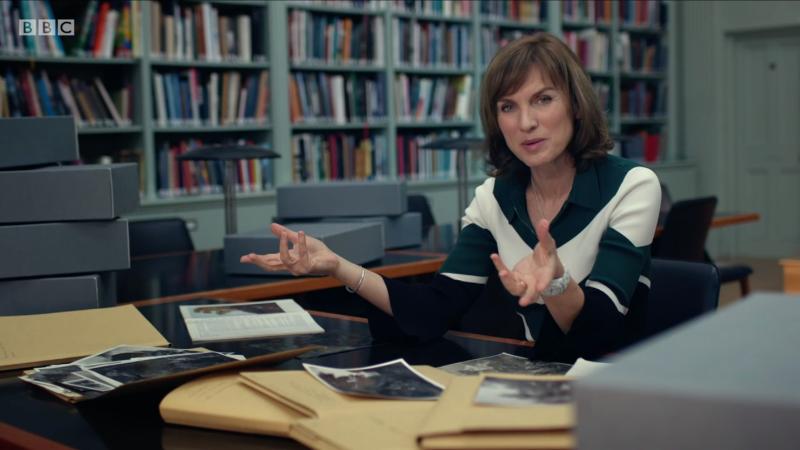How Photo Archive Research Can Be Made Accessible To The Public
Embark upon a thousand virtual Grand Tours without moving more than our fingers
If I were to point to one development in my career beyond all others that has transformed the capacity to find answers it is the digitisation of art historical resources. It is the research equivalent of the railway revolution. The far-flung and remote are now reachable. There are enough tracks, sidings, halts, cuttings, and destinations to explore the art world with ease. Instant veins of connection combined with high quality reproductions facilitate comparisons, attributions, identifications, and provenance research with the speed of a Flying Scotsman (times a few billion). From the A level student to the seasoned art historian, we can embark upon a thousand virtual Grand Tours without moving more than our fingers.
The Paul Mellon Centre Photographic Archive will be a fabulous new venue to add to our cultural adventuring. Digital facsimiles of every item in the collection have been created and uploaded onto their new online database. More than 100,000 images of British art and architecture can be sorted, compared, and collated in a way never before possible. The consequence of this heroic and charitable act will soon be evident. Budding art historians and seasoned scholars alike can now skip over a digital bridge into a fecund new hunting ground. For those of us professionally linked to the cause of British art (our gallery covers 500 years of it) it is digital gift of considerable consequence.

Fig. 1
Fiona Bruce filming Fake or Fortune for the BBC at the Paul Mellon Centre.
The online art history revolution has been a revolution in the true sense. Speaking with my other hat as a broadcaster, it is remarkable how researchers on Fake or Fortune? who have never picked up an art history book have been able to find their way through the provenance jungle. A Constable sketch we recently featured is a case in point. Leading experts a quarter of a century ago had deemed it a pastiche of the Haywain, which was a particular disappointment to me personally, as I had bought it as a fledgling art dealer with the notion that it was an overlooked original work by the great landscapist. Using online resources and photographic archives at institutions like the Tate and Getty, the team was subsequently not only able to prove it to be authentic, but replete with an astonishingly unbroken provenance back to the very day it left Constable’s family. The researcher in question who cracked this was an English graduate in her twenties.
I have no doubt that the digitisation of leading art historians’ archives at the Paul Mellon Centre – were this ever to happen – would produce similar eureka moments for our researchers in the future. I experienced one such moment myself on another Fake or Fortune? programme when we attempted to prove the authenticity (or otherwise) of an early Gainsborough landscape. The copious photographic enquiries about potential Gainsboroughs made to the late Dr John Hayes – the long-time ‘go-to’ expert on the artist and a friend – represent an orchard of low-hanging fruit for those seeking clues about authenticity, ownership, and provenance in relation to the artist. Right up until his death in 2006, photographs of hopeful Gainsboroughs were dropping into John’s postbox – and he was a punctilious and thoughtful responder. A portion of Hayes’s art-historical research papers were bequeathed to, and catalogued by, the PMC. The catalogue also includes digital copies of key items from the Hayes collection which allowed our researchers to pinpoint material of interest from their desktops. Visiting the Centre to consult this resource, we laid out the photographic answers we were seeking on the Public Study Room table for the television cameras to record. The painting was ultimately deemed a contemporaneous copy, arguably a forgery. The archival evidence was transformative in helping us get there. Items from the John Hayes Archive have been digitised and are available online; however, the Hayes collection has not been digitised in its entirety. Should such materials be fully digitised in future, we could reduce what was a day’s work to possibly a few minutes.
And that raises a poignant thought. I rather revere the PMC’s panelled, book-filled Public Study Room with the eyes of the seventeenth-century playwright Thomas Killigrew by William Sheppard, gazing down upon the art historically industrious – many of whom have pilgrimed their way across Britain and the Atlantic to use its facilities. It would be sad if researchers, feasting themselves on the increasing amount of digital resources being provided by the PMC, missed the chance to visit this scholarly sanctuary, and to inspect the Centre’s archival materials in person. But this is a moment for celebration rather than sentimentality. It is now the turn for this niche photographic archive to be the traveller – to reach an infinitely broad audience by radiating its secrets. Another playwright in Killigrew’s century, William Shakespeare, could have put it thus: ‘How far that little candle throws his beams!’ (The Merchant of Venice).